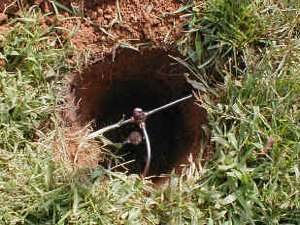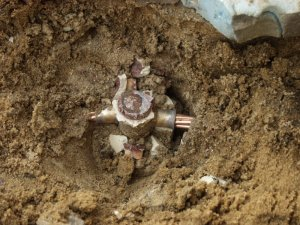According to the paragraph 3.2.3.1. in the Manual SB 153-34.21.122-2003, the ground electrode should be buried to a depth of at least half a meter from the ground surface. Normally, the following question arises after installing the system: should the place of installation be left open or can it be covered with asphalt?
 |
 |
An answer to this question can be found in the regulatory documents RD 34.21.122-87 and ev. 7 of EIC.
Paragraph 1.8 of RD Instruction 34 shows that it is not forbidden to locate grounding electrodes under asphalt:
On the other hand, p. 1.7.94 in rev. 7 of the EIC states that if the grounding device of an electrical installation with a voltage of 1 kW or higher in an electrical network with an effectively grounded neutral is connected to the grounding device of another electrical installation, this electrical installation does not require any of the measures on potential equalization and balancing provided for in this paragraph, in case that the building has asphalt paving around it, including in front of entrances and gates.
As we can see, there are no prohibitions on laying asphalt where grounding is installed. Moreover, such paving protects people from step voltage impact. However, it should be noted that the grounding device is subject to regular inspection even when the grounding electrode is buried underground. For example, RTOCEI (PTEEP) sets out the following requirements:
Design, calculate and assemble correctly! For a free consultation, please contact our technical experts.

